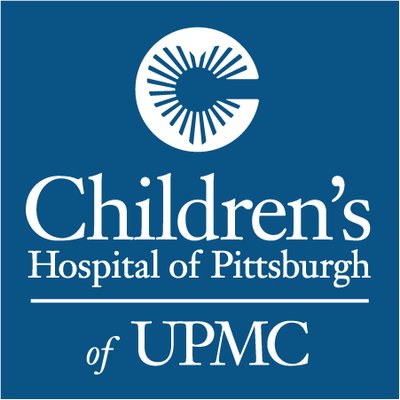Reduced-Intensity Conditioning (RIC) and Myeloablative Conditioning (MAC) for HSCT in AML/MDS
| Status: | Recruiting |
|---|---|
| Conditions: | Blood Cancer, Blood Cancer, Blood Cancer, Hematology |
| Therapuetic Areas: | Hematology, Oncology |
| Healthy: | No |
| Age Range: | Any - 22 |
| Updated: | 11/9/2018 |
| Start Date: | September 4, 2015 |
| End Date: | September 2021 |
| Contact: | Randy Windreich, MD |
| Phone: | 412-692-5055 |
A Phase II Study of Myeloablative and Reduced-Intensity Conditioning Regimens for Children With Acute Myeloid Leukemia or Myelodysplastic Syndrome Undergoing Allogeneic Hematopoietic Stem Cell Transplantation
The purpose of this study is to compare safety and efficacy of reduced-intensity conditioning
and myeloablative conditioning regimens prior to HSCT in high-risk AML/MDS pediatric and
young adult patients. This study investigates the use of two novel conditioning therapies for
hematopoietic stem cell transplant (HSCT). The primary focus of both the investigators'
myeloablative and reduced-intensity conditioning regimens is to reduce overall toxicity so
that pediatric and young adult patients with high-risk AML/MDS with significant pretransplant
comorbidities who would have been ineligible to proceed to HSCT previously can now receive
potentially life-saving treatment.
and myeloablative conditioning regimens prior to HSCT in high-risk AML/MDS pediatric and
young adult patients. This study investigates the use of two novel conditioning therapies for
hematopoietic stem cell transplant (HSCT). The primary focus of both the investigators'
myeloablative and reduced-intensity conditioning regimens is to reduce overall toxicity so
that pediatric and young adult patients with high-risk AML/MDS with significant pretransplant
comorbidities who would have been ineligible to proceed to HSCT previously can now receive
potentially life-saving treatment.
Inclusion Criteria for Myeloablative Conditioning Transplant
1. Patient must be between 0-22 years of age.
2. Diagnosis of acute myeloid leukemia or myelodysplastic syndrome, either high-risk,
relapsed or primary refractory, MRD-positive without circulating myeloblasts or active
extramedullary disease at the time of transplant. Active marrow disease is permitted.
("High-risk" AML features are defined by the following: greater than 15% blasts in the
bone marrow after the first course of Induction chemotherapy; adverse cytogenetic
abnormalities of monosomy 5, monosomy 7, or 5q deletion; presence of FLT3 positive
internal tandem duplication (FLT3/ITD+), particularly high allelic ratio; or
treatment-related AML.)
3. Stem cell sources include bone marrow, peripheral blood stem cells, or umbilical cord
blood.
4. Related bone marrow, peripheral blood stem cell, or cord blood unit: sibling should be
HLA-matched at A, B, and DR-B1 loci. Unrelated cord blood unit should be at a minimum
of 4/6 matched at antigen level on HLA A and B, and allele level at HLA DR-B1 loci.
Unrelated bone marrow or peripheral blood stem cell donor should be HLA allele level
matched at A, B, C, and DR-B1.
5. Minimum prefreezing cell dose for cord blood units: 3 x 107 total nucleated cells/kg
and 1.5 x 105 CD34+ cells/kg. If this is not attainable, then double cord blood
transplant should be considered.
6. Patient, parent, or legal guardian must have given written informed consent and/or
assent.
7. Patient must have adequate performance status (Lansky score ≥60% for patients <16
years; Karnofsky score ≥60% for patients ≥16 years).
8. Patient must have adequate pre-transplant organ function as defined by:
- Renal: creatinine clearance or radioisotope GFR ≥70 mL/min/1.73 m2.
- Hepatic: total bilirubin ≤2.0 mg/dL unless the increase in bilirubin is
attributable to Gilbert's syndrome; and SGOT (AST), SGPT (ALT), and Alkaline
Phosphatase <4 x upper limit of normal (ULN) for age.
- Cardiac: normal cardiac function by echocardiogram or radionuclide scan, as
defined by left ventricular ejection fraction at rest >45%, or shortening
fraction >26%.
- Pulmonary: FEV1, FVC, and DLCO (corrected for hemoglobin) ≥50% of predicted; if
unable to perform pulmonary function tests, then oxygen saturation ≥92% on room
air.
Eligibility Criteria for Reduced-Intensity Conditioning Transplant
1. Patient must be between 0 -22 years of age.
2. Patient must meet criteria #2-7 in section 5.1.
3. Patient is excluded from myeloablative conditioning transplant due to failure to meet
any of the criteria outlined in #8 of section 5.1.
4. Patient must have adequate pre-transplant organ function as defined by:
- Renal: creatinine clearance or radioisotope GFR ≥70 mL/min/1.73 m2.
- Hepatic: total bilirubin ≤2.5 mg/dL unless the increase in bilirubin is
attributable to Gilbert's syndrome; and SGOT (AST), SGPT (ALT), and Alkaline
Phosphatase <5 x upper limit of normal (ULN) for age.
- Cardiac: normal cardiac function by echocardiogram or radionuclide scan, as
defined by left ventricular ejection fraction at rest >40%, or shortening
fraction >26%.
- Pulmonary: FEV1, FVC, and DLCO (corrected for hemoglobin) ≥40% of predicted; if
unable to perform pulmonary function tests, then oxygen saturation ≥92% on room
air.
Exclusion Criteria:
Exclusion Criteria for Myeloablative Conditioning Transplant
1. Recipient of an autologous stem cell transplant.
2. Allogeneic hematopoietic stem cell transplant within the previous 3 months.
3. Uncontrolled bacterial, viral, fungal, or other infection at the time of
cytoreduction. Uncontrolled infection defined by positive blood cultures and fevers
>38.0 within 24-48 hours of start of conditioning therapy.
4. Evidence of HIV/HTLV infection or HIV/HTLV positive serology.
5. Pregnancy or lactating. All females of 11 years of age or older and/or who have begun
menstruating will be screened for HCG by either urinalysis or a blood sample in order
to screen for pregnancy status.
6. Patients with any inherited bone marrow failure syndrome (including, but not limited
to, Fanconi anemia, Shwachman-Diamond syndrome, and dyskeratosis congenital) or Down
syndrome (defined as either constitutional trisomy 21 or constitutional mosaicism of
trisomy 21).
We found this trial at
1
site
4401 Penn Avenue
Pittsburgh, Pennsylvania 15224
Pittsburgh, Pennsylvania 15224
412-692-5325

Phone: 412-692-5055
Children's Hospital of Pittsburgh of UPMC UPMC is one of the leading nonprofit health systems...
Click here to add this to my saved trials